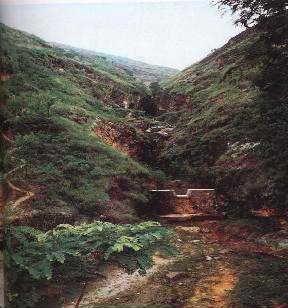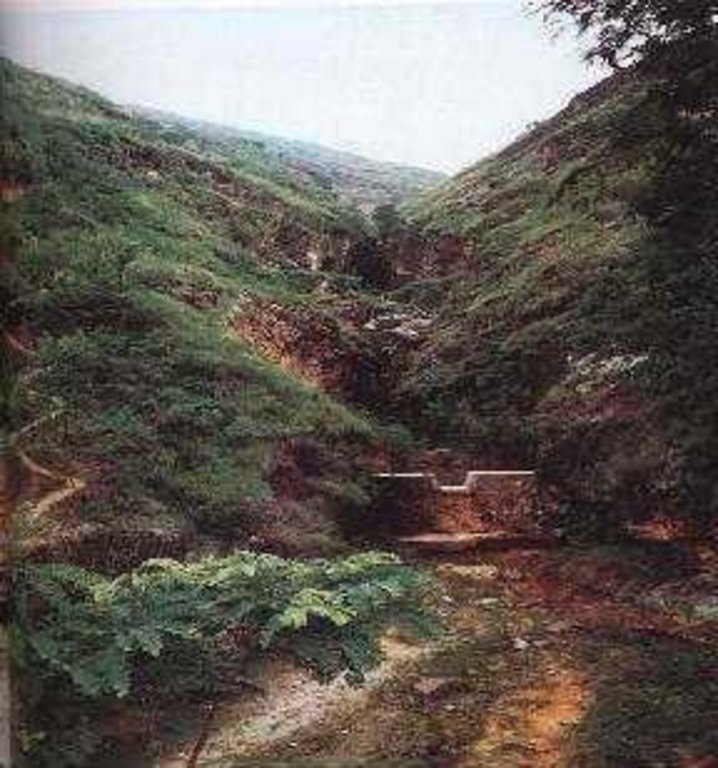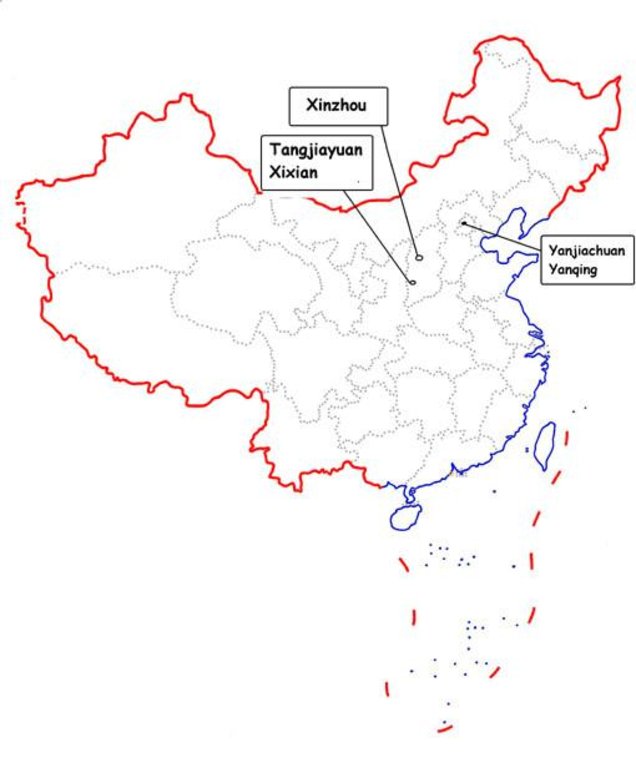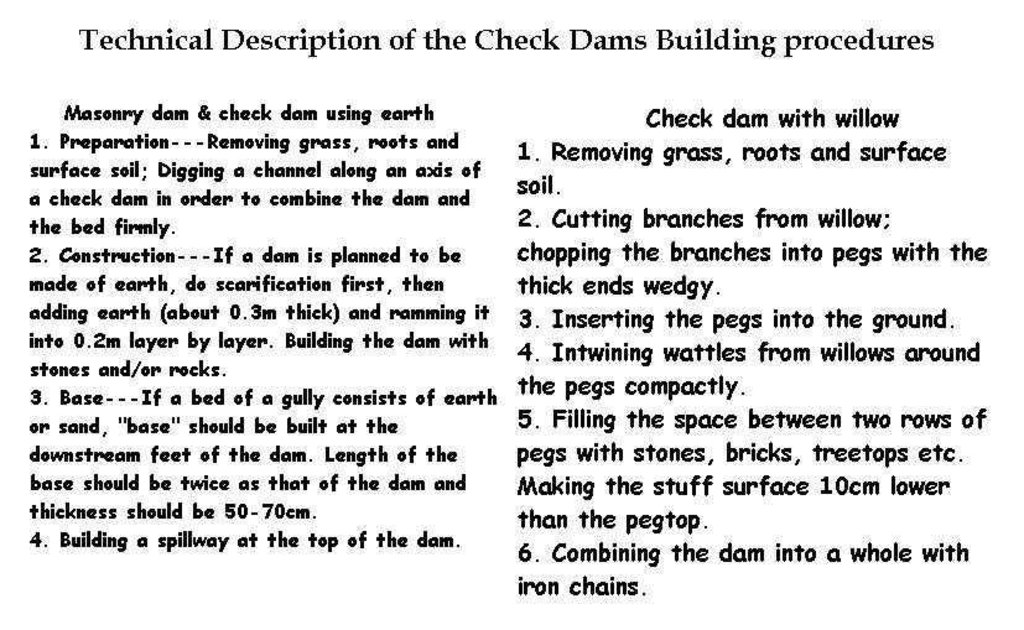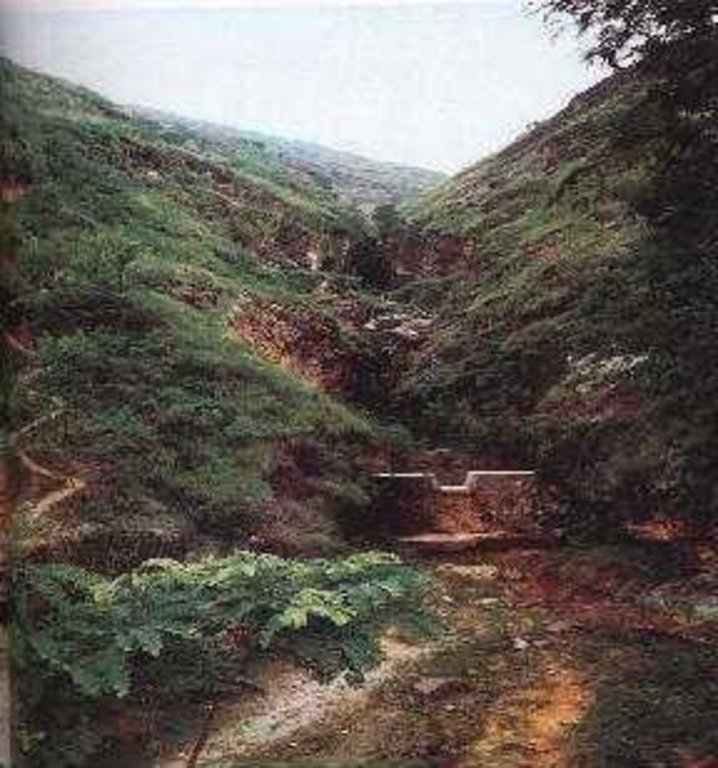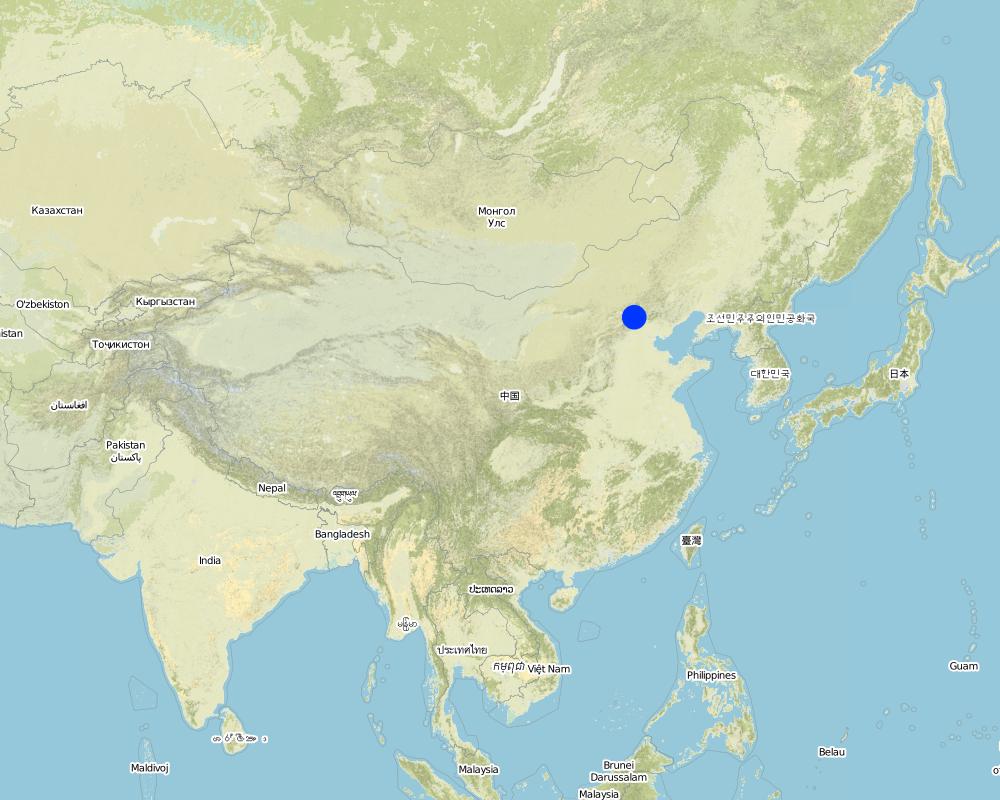Check Dam [Chine]
- Création :
- Mise à jour :
- Compilateur : Haiyan WEI
- Rédacteur : –
- Examinateur : David Streiff
approaches_2397 - Chine
Voir les sections
Développer tout Réduire tout1. Informations générales
1.2 Coordonnées des personnes-ressources et des institutions impliquées dans l'évaluation et la documentation de l'Approche
Spécialiste GDT:
Nom du ou des institutions qui ont facilité la documentation/ l'évaluation de l'Approche (si pertinent)
Department of Resources and Environmental Science, Beijing Normal University (Department of Resources and Environmental Science, Beijing Normal University) - Chine1.3 Conditions relatives à l'utilisation par WOCAT des données documentées
Le compilateur et la(les) personne(s) ressource(s) acceptent les conditions relatives à l'utilisation par WOCAT des données documentées:
Oui
1.4 Références au(x) questionnaire(s) sur les Technologies de GDT
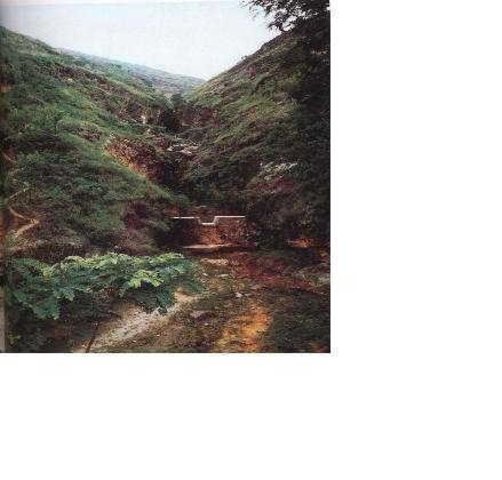
Check Dam [Chine]
Check dam refers to dam that constructed in the gullies or river ways and the height of the dam is often lower than 5m.
- Compilateur : Haiyan WEI
2. Description de l'Approche de GDT
2.1 Courte description de l'Approche
Check dam is a kind of sediment storage dam of 5m below and is built in channels to control the down cutting of channel bed.
2.2 Description détaillée de l'Approche
Description détaillée de l'Approche:
Aims / objectives: Xifeng county is one of the key areas of soil erosion control in China. In order to reduce the local soil erosion, and also to bring certain economic benefits to local residents, the Ministry of Water Resources is in charge of check dam construction activities.
Check dam is widely used in controlling soil erosion. The training is a main approach to promotion of the check dam technology. It is necessary to mobilize local people to participate in construction, while providing to them some cash subsidies. In such a way local people can get economic benefits, and strengthen their awareness and
knowledge of soil and water conservation.
Methods: Main objectives: (1) Elevating erosion basis of channel bed to prevent the channel down cutting and channel bank expansion, and decrease channel gradient. (2) Storing silt and reducing the amount of sediment, transported into the rivers. (3) Decreasing channel flow rates and reducing the flood risk of the lower reaches. (4) Debris flow control by use of strong permanent check dams. (5) Making channel silted to form sediment-covered terraces for future use.
Stages of implementation: Implemetation procedure: (1) site selection and design; (2) material preparation, labor recruitment and temporary road buliding; (3) main project construction.
Other important information: The construction cost of check dam is determined by project quality requirements, difficulty of construction, work size, construction technology, and some other factors. Regional factors have also an important impact. Therefore, the investment is mainly made by government with local supporting funds. Check dam construction is often
associated with plant cultivation, aquaculture design and other measures to make comprehensive use of sediment retention and water storage. It can increase agricultural productivity and farmers’ income in addition to improve local environment.
2.3 Photos de l'approche
2.5 Pays/ région/ lieux où l'Approche a été appliquée
Pays:
Chine
Région/ Etat/ Province:
Shanxi, Beijing
Autres spécifications du lieu :
Xifeng
Map
×2.6 Dates de début et de fin de l'Approche
Indiquez l'année de démarrage:
1960
2.7 Type d'Approche
- traditionnel/ autochtone
2.8 Principaux objectifs de l'Approche
The Approach focused on SLM only
1) Fixation and raise of erosion basis, preventing down cutting of channel and channel bank expansion. 2) Making channel silted to form sediment-covered terraces for farming. 3) Decreasing channel gradient and flow rates and reducing the flood risk of the lower reaches.
The SLM Approach addressed the following problems: 1) Serious debris flow which causes tremendous economic loss and threats to the residents safety. 2) Serious soil erosion, especially down cutting and expansion of gully. 3) Poor local economy, lack of funds and technology for soil erosion control.
2.9 Conditions favorisant ou entravant la mise en œuvre de la(des) Technologie(s) appliquée(s) sous l'Approche
normes et valeurs sociales/ culturelles/ religieuses
- entrave
Unawareness of soil and conservation knowledge.
Treatment through the SLM Approach: Strengthening education and training.
disponibilité/ accès aux ressources et services financiers
- entrave
More investment needed for mortar stone check dam.
Treatment through the SLM Approach: Government and company investment to develop eco-industry.
cadre juridique (régime foncier, droits d'utilisation des terres et de l'eau)
- entrave
The existing land ownership, land use rights / water rights hindered a little the approach implementation The state has ownership of the land resources, land users can only lease the land for a period of time, they worry about their land would be transferred to others.
connaissances sur la GDT, accès aux supports techniques
- entrave
Check dam design and construction need qualified technicians.
Treatment through the SLM Approach: Professionals and training.
3. Participation et rôles des parties prenantes impliquées dans l'Approche
3.1 Parties prenantes impliquées dans l'Approche et rôles
- exploitants locaux des terres / communautés locales
Working land users were mainly men (In 1960s and 1970s, the SWC activities mainly distributed and administrated to farmers to do in leisure time(winter), and grouped to build check dams, terraces, etc
Existing groups of land users;
Those who live in gully areas and have less flat crop land provide their advices and requirement to the government and decision makers.
- gouvernement national (planificateurs, décideurs)
3.2 Participation des exploitants locaux des terres/ communautés locales aux différentes phases de l'Approche
| Participation des exploitants locaux des terres/ communautés locales | Spécifiez qui était impliqué et décrivez les activités | |
|---|---|---|
| initiation/ motivation | soutien extérieur | Mainly:public meetings; partly: workshops/seminars; Series of site meetings to explain the SWC to the land users. |
| planification | soutien extérieur | Mainly: public meetings; partly: workshops/seminars |
| mise en œuvre | interactive | casual labour |
| suivi/ évaluation | interactive | Mainly: interviews/questionnaires; partly: reporting; |
| Research | auto-mobilisation | on-station |
3.4 Prises de décision pour la sélection de la Technologie/ des Technologies
Indiquez qui a décidé de la sélection de la Technologie/ des Technologies à mettre en œuvre:
- les responsables politiques/ dirigeants
Expliquez:
consultative.
Decisions on the method of implementing the SLM Technology were made by by politicians / leaders. directive (top-down).
4. Soutien technique, renforcement des capacités et gestion des connaissances
4.1 Renforcement des capacités/ formation
Une formation a-t-elle été dispensée aux exploitants des terres/ autres parties prenantes?
Oui
Spécifiez qui a été formé:
- exploitants des terres
- extensionists/trainers, politicians/decision makers
Formats de la formation:
- entre agriculteurs (d'exploitants à exploitants)
- réunions publiques
- cours
Thèmes abordés:
The approach provide the training about the technology, such as check dam dimension and materials etc.
4.2 Service de conseils
Les exploitants des terres ont-ils accès à un service de conseils?
Oui
Spécifiez si le service de conseils est fourni:
- dans les champs des exploitants?
Décrivez/ commentez:
The Basic Farmland Construction; Key elements: Government plan, design, distribute, Farmers implement; 1) Advisory service was carried out through: government's existing extension system 2) Advisory service was carried out through: government's existing extension system; Extension staff: mainly government employees 3) Target groups for extension: land users; Activities: Field visit and demonstration
Advisory service is quite adequate to ensure the continuation of land conservation activities; At each government level, there is a SWC division which is in charge of SWC activities including extension.
4.3 Renforcement des institutions (développement organisationnel)
Des institutions ont elles été mises en place ou renforcées par le biais de l'Approche?
- oui, modérément
Spécifiez à quel(s) niveau(x), ces institutions ont été renforcées ou mises en place:
- local
Précisez le type de soutien:
- financier
- renforcement des capacités/ formation
4.4 Suivi et évaluation
Le suivi et l'évaluation font ils partie de l'Approche? :
Oui
Commentaires:
bio-physical aspects were ad hoc monitored by 0 through observations; indicators: debris flow frequency,speed,volume, time and damage
technical aspects were ad hoc monitored by 0 through observations; indicators: damage degree
socio-cultural aspects were ad hoc monitored by 0 through measurements; indicators: accredited attitude for debris flow control and part icipation in check dam building.
economic / production aspects were ad hoc monitored by 0 through observations; indicators: control area
area treated aspects were ad hoc monitored by 0 through measurements; indicators: science and rationality of Management
no. of land users involved aspects were ad hoc monitored by 0 through observations; indicators: None
management of Approach aspects were regular monitored by 0 through measurements; indicators: None
There were several changes in the Approach as a result of monitoring and evaluation: Improving the construction method so as to make the check dams much durable.
4.5 Recherche
La recherche a-t-elle fait partie intégrante de l’Approche?
Oui
Spécifiez les thèmes:
- économie/ marketing
- écologie
- technologie
Donnez plus de détails et indiquez qui a mené ces recherches:
Manual and criteria for standardization design and construction.
Research was carried out both on station and on-farm
5. Financement et soutien matériel externe
5.1 Budget annuel de la composante GDT de l'Approche
Si le budget annuel précis n'est pas connu, indiquez une fourchette:
- 100 000-1 000 000
Commentez (par ex. principales sources de financement/ principaux bailleurs de fonds):
Approach costs were met by the following donors: government (national): 90.0%; local community / land user(s) (-): 10.0%
5.2 Soutiens financiers/ matériels fournis aux exploitants des terres
Les exploitants des terres ont-ils reçu un soutien financier/ matériel pour la mise en œuvre de la Technologie/ des Technologies?
Oui
5.3 Subventions pour des intrants spécifiques (incluant la main d'œuvre)
- équipement
| Spécifiez les intrants subventionnés | Dans quelle mesure | Spécifiez les subventions |
|---|---|---|
| machines | entièrement financé | |
Si la main d'œuvre fournie par les exploitants des terres était un intrant substantiel, elle était:
- payée en espèces
Commentaires:
Before 1970s, the SWC activities were obligation, but after that some subsidies were provided by government.
Labour can also be voluntarely or rewarded with other material support
5.4 Crédits
Des crédits ont-ils été alloués à travers l'Approche pour les activités de GDT?
Oui
Spécifiez les conditions (taux d'intérêts, remboursements, etc.):
Interest rate charged: 2.0%
Interest was lower than market rate.
6. Analyses d'impact et conclusions
6.1 Impacts de l'Approche
Est-ce que l'Approche a aidé les exploitants des terres à mettre en œuvre et entretenir les Technologies de GDT?
- Non
- Oui, un peu
- Oui, modérément
- Oui, beaucoup
Harvesting runoff in the rainy season and making 'deposited flat land'.
Est-ce que l'Approche a amélioré les questions foncières et des droits d'utilisation qui entravent la mise en œuvre des Technologies?
- Non
- Oui, un peu
- Oui, modérément
- Oui, beaucoup
The SWC activities were organized to implement by local communities which can properly deal with the relationship. The problem is likely to be overcome in the near future. The SWC applied area can be contracted for a long time between land ownership and users.
Did other land users / projects adopt the Approach?
- Non
- Oui, un peu
- Oui, modérément
- Oui, beaucoup
The method will help to control debris flow; the check dam is widely used
6.3 Durabilité des activités de l'Approche
Les exploitants des terres peuvent-ils poursuivre ce qui a été mis en œuvre par le biais de l'Approche (sans soutien extérieur)?
- oui
6.4 Points forts/ avantages de l'Approche
| Points forts/ avantages/ possibilités du point de vue de l'exploitant des terres |
|---|
| Mitigating damage caused by debris flow and floods (How to sustain/ enhance this strength: Making planning and design on watershed management) |
| Points forts/ avantages/ possibilités du point de vue du compilateur ou d'une autre personne ressource clé |
|---|
| Erosion control to decrease sediment (How to sustain/ enhance this strength: Check dams building.) |
| More effective use of rainfall resources (How to sustain/ enhance this strength: Develop compound management with cultivation and aquaculture.) |
| Increasing farmer’s income (How to sustain/ enhance this strength: Completing irrigation facility and establishing economic forest) |
6.5 Faiblesses/ inconvénients de l'Approche et moyens de les surmonter
| Faiblesses/ inconvénients/ risques du point de vue de l’exploitant des terres | Comment peuvent-ils être surmontés? |
|---|---|
| After abolition of the compulsory labor and accumulative labor service, the enthusiasm and willingness of farmers to participation is lowered | Some measures shoule be taken by government at all levels to stimulte and encourage farmers to participate in the construction work |
| Faiblesses/ inconvénients/ risques du point de vue du compilateur ou d'une autre personne ressource clé | Comment peuvent-ils être surmontés? |
|---|---|
| Large investment. | Multi-level investment system, which includes national investment with local support, labor input by farmers, and use of foreign and social funds. |
7. Références et liens
7.1 Méthodes/ sources d'information
- compilation à partir de rapports et d'autres documents existants
7.2 Références des publications disponibles
Titre, auteur, année, ISBN:
Special Planning of Soil and Water Conservation in Xinzhou Region , Shanxi Province (1986-2000)
Disponible à partir d'où? Coût?
Library of the Resource and Environmental Department of the Beijing Normal Univ.
Titre, auteur, année, ISBN:
The application of the Check dam with willow in controlling gully erosion.Tu xingwen. Soil and water conservation in China, 1986.
Disponible à partir d'où? Coût?
Library of the Resource and Environmental Department of the Beijing Normal Univ.
Titre, auteur, année, ISBN:
How to design the dry masonry dam in the Hanjiachuan watershed. Tianyuzhu, Wangzuliang. Beijing. Water conservation in Beijing, 2000.3
Disponible à partir d'où? Coût?
Library of the Resource and Environmental Department of the Beijing Normal Univ.
Titre, auteur, année, ISBN:
Consideration about the check dam design and application. Liu shunzong. Soil and water conservation in China, 1990.6
Disponible à partir d'où? Coût?
Library of the Resource and Environmental Department of the Beijing Normal Univ.
Liens et modules
Développer tout Réduire toutLiens

Check Dam [Chine]
Check dam refers to dam that constructed in the gullies or river ways and the height of the dam is often lower than 5m.
- Compilateur : Haiyan WEI
Modules
Aucun module trouvé


